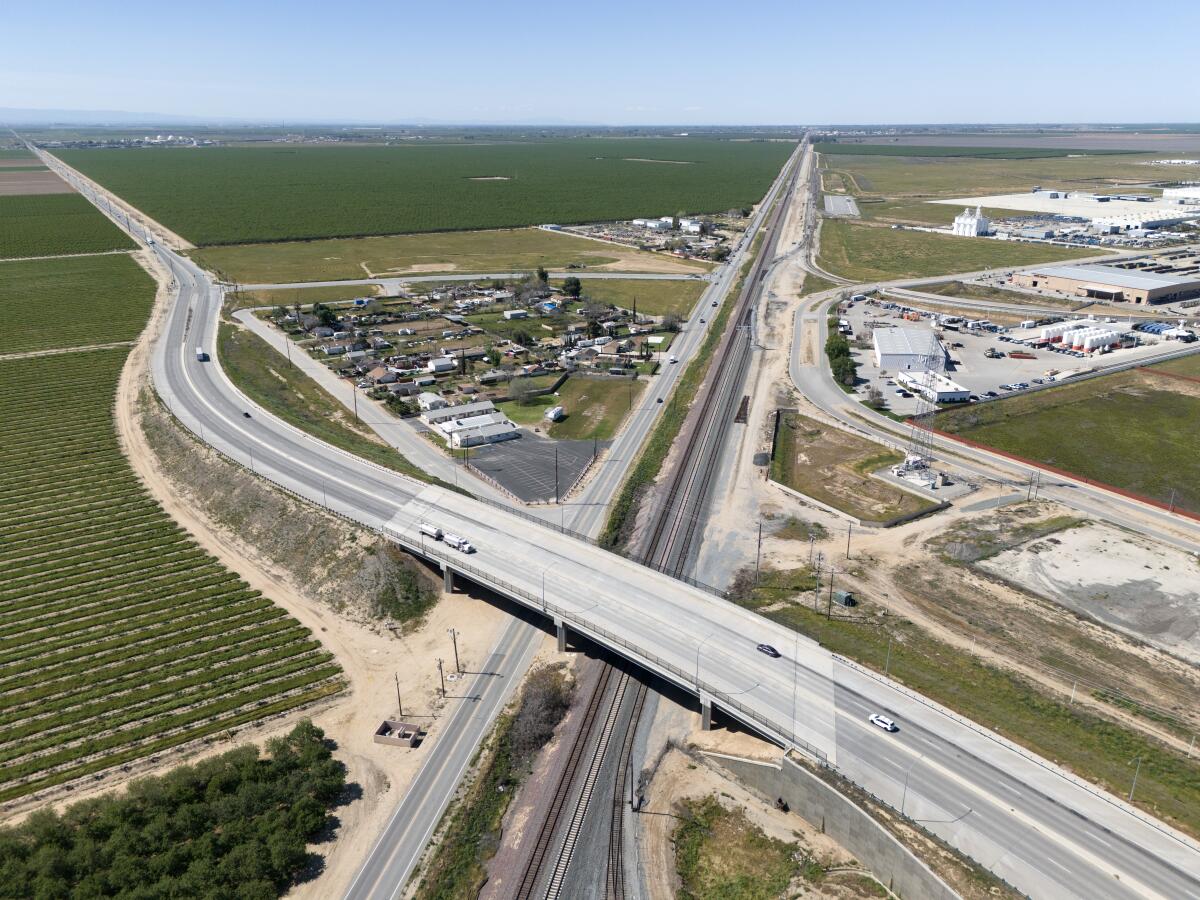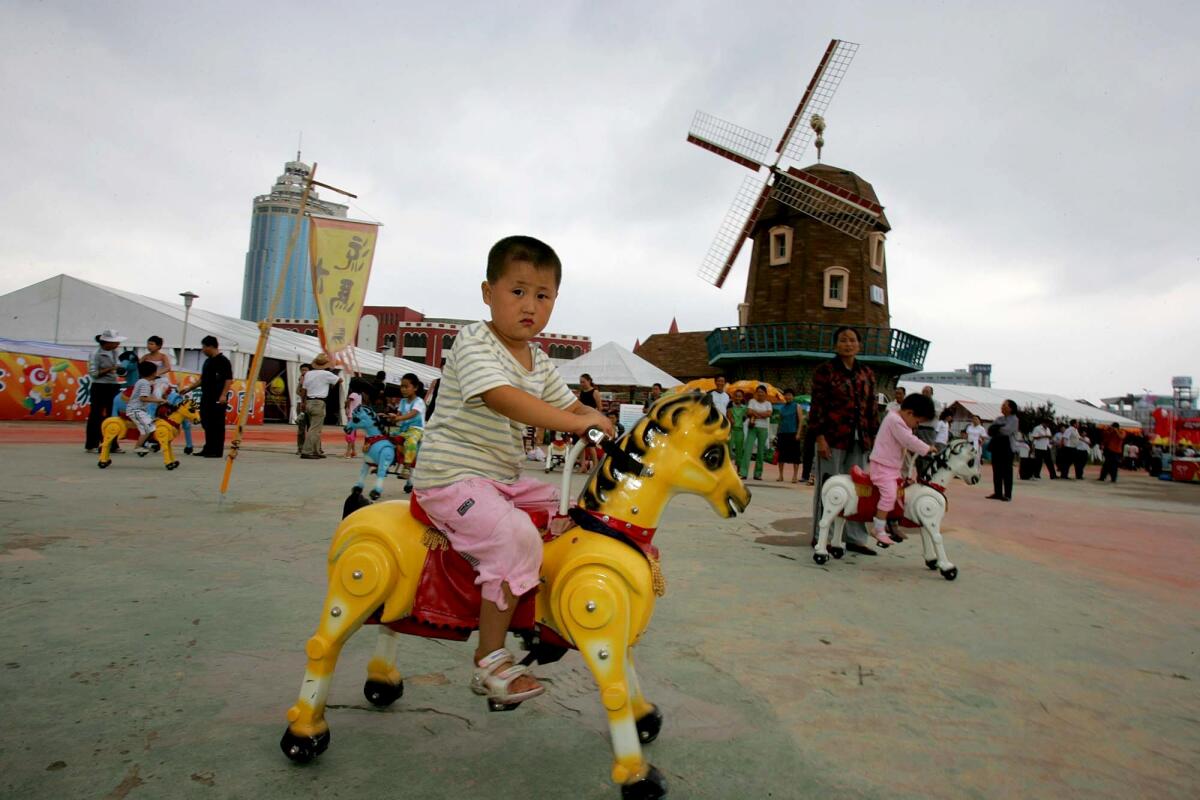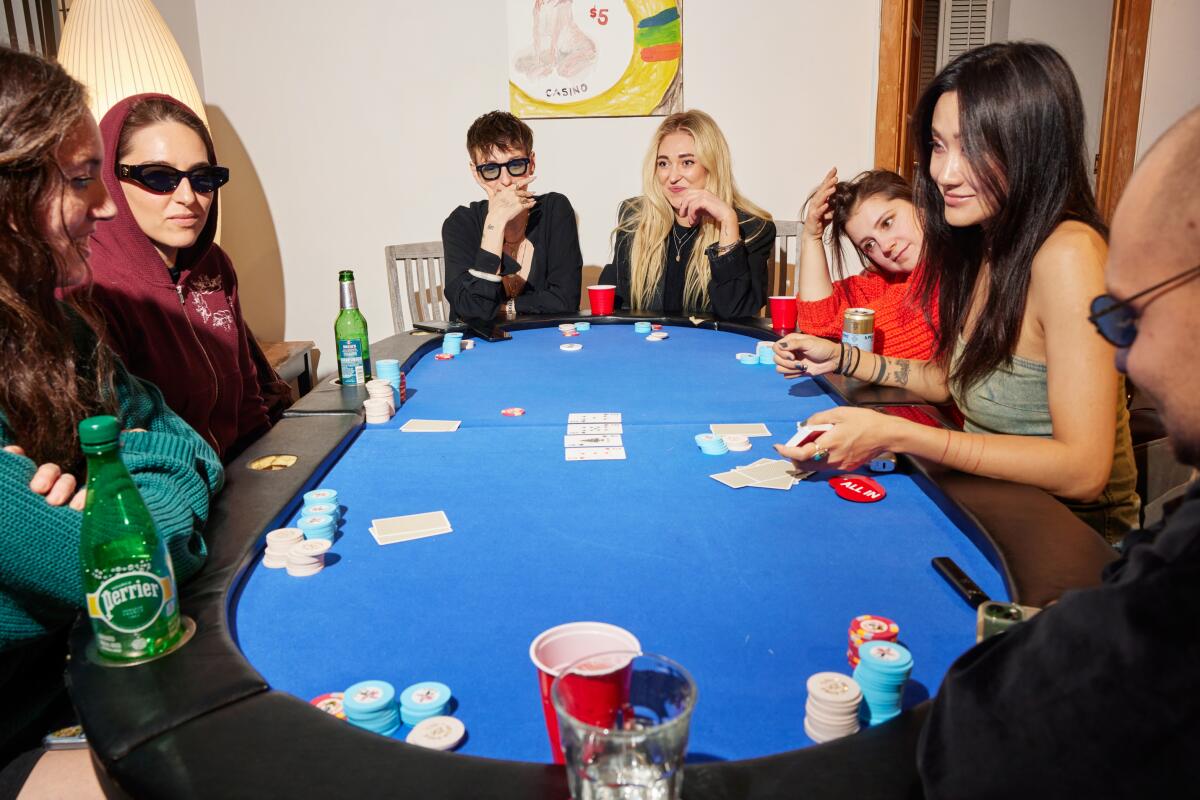How 3 student journalists told the story of campus turmoil
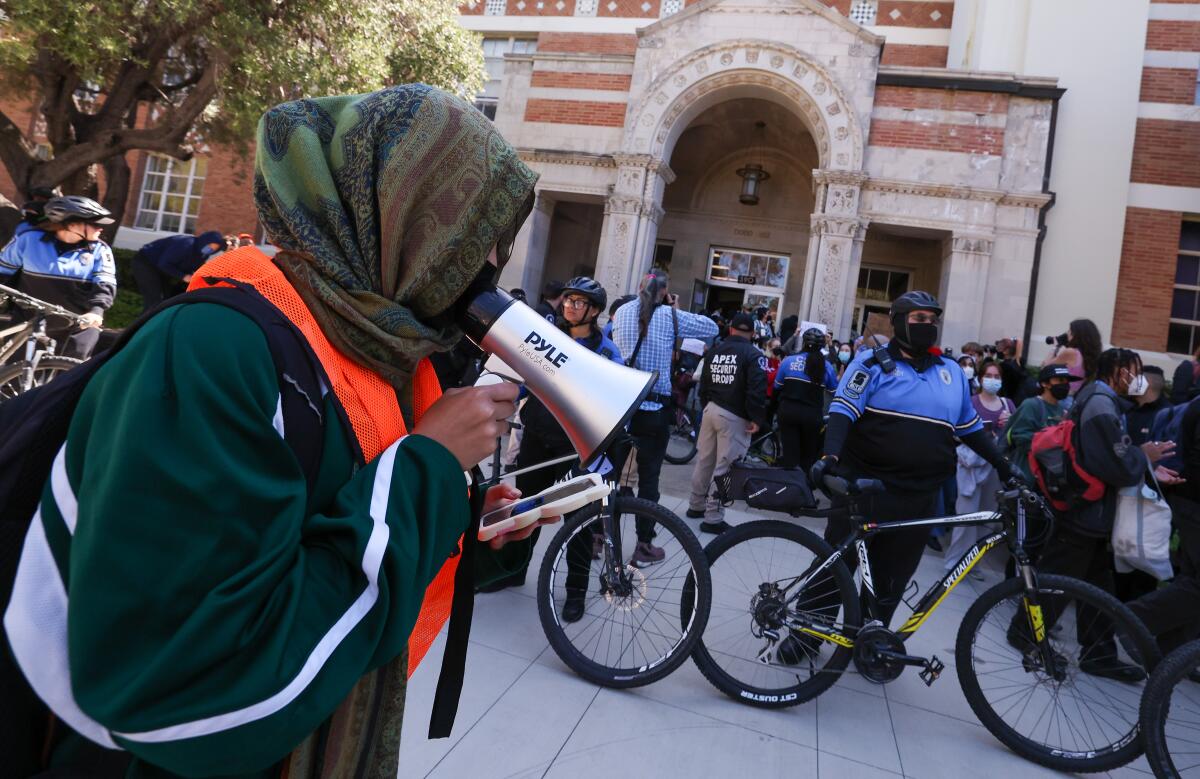
- Share via
Good morning. It’s Wednesday, May 8. Here’s what you need to know to start your day.
- Student journalists share experiences covering encampments, protests and occupations.
- A new poll shows most young people are considering leaving L.A. due to high housing costs.
- Weed changed this California town. Now artsy residents are all in on psychedelics.
- And here’s today’s e-newspaper
You're reading the Essential California newsletter
Our reporters guide you through our biggest news, features and recommendations every morning
You may occasionally receive promotional content from the Los Angeles Times.
Student journalists have been beaten, harassed and threatened.
After serving this school year as the news editor for the Daily Bruin, UCLA’s independent student-run newspaper, Catherine Hamilton had plans to retire from journalism and pursue law school when she graduates in 2025.
But on the first day of her planned exit, pro-Palestinian protesters set up an encampment in front of Royce Hall — demanding an end to Israel’s war in the Gaza Strip and that UCLA divest from Israel and companies that sell weapons or services to Israel.
Hamilton immediately mobilized and went to the encampment “every single day” to report on the developments, she said.
Covering the story turned dangerous. Alongside three of her peers from the Daily Bruin, Hamilton was verbally harassed, followed and beaten by pro-Israel counterprotesters last Wednesday when a mob attacked the encampment. As she tried to get away, Hamilton said, she was punched repeatedly in the chest and upper abdomen and sprayed with an irritant. She was briefly hospitalized.
Hamilton’s call to duty typified the work of student journalists, who have often been first to chronicle the turmoil on the campuses they know so well.
We talked to a few of them. Here’s what they had to share.
What stands out about the atmosphere on your campus?
Mohammed Zain Shafi Khan is a junior at USC double-majoring in international relations and journalism and the incoming executive editor of Annenberg Media, a student-led multiplatform news operation .
Annenberg Media has covered the progression of events on campus since Oct. 7, including the cancellation of the valedictorian’s graduation speech, the ensuing protests, the establishment of a pro-Palestinian encampment and the university’s response — which resulted in more than 90 arrests and new security measures such as identification checkpoints.
The protests were “very peaceful,” said Khan, who saw “people doing yoga, watching a movie, having teachings, speakers coming in, exercising their right to free speech and saying chants.”
The campus is now “militarized,” he said. “You need to stand in long lines, scan your IDs, get your bags checked, pass metal detectors. … And I don’t know what kind of message that sends.”
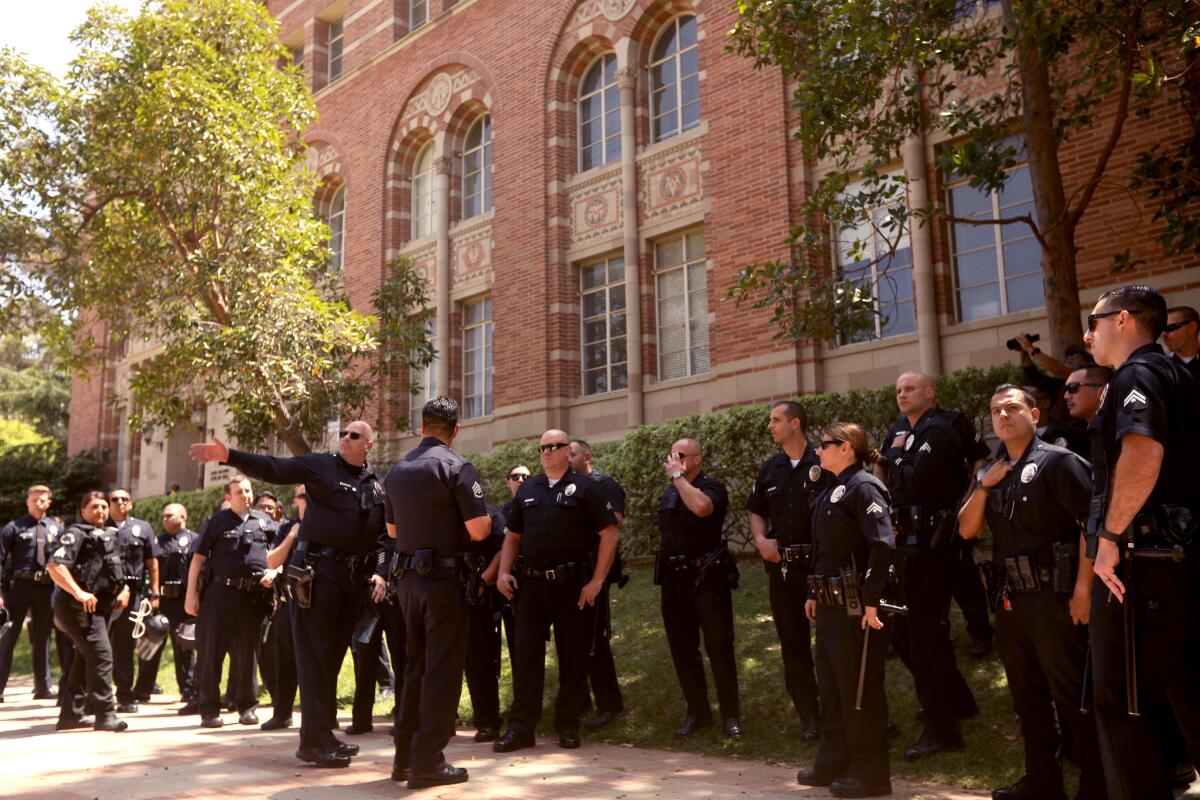
Hamilton said in the aftermath of the UCLA encampment attack, many students feel betrayed by the university administration and fears persist.
“I don’t think any of us expected the events of Tuesday night [April 30], nor the violence with which police forces came in and swept the encampment,” she said. “I think a lot of people are lost. … Everyone’s terrified of the violence and of the potential for arrest.”
Did you face any barriers in reporting?
When law enforcement in riot gear cleared the USC pro-Palestinian camp on Sunday, Khan said he and his colleagues were pushed to a corner at least “100 feet away from the encampment” by the LAPD.
“It was essentially not acceptable to any of us on the scene, because our job is to report on what we see and what is happening,” Khan said, adding that they moved forward and questioned police officers.
At UCLA, Hamilton said they “were promised [24-hour] access to one of the buildings in the quad where the encampment was, to remain safe,” but they were barred from entering the building, which “specifically became a problem Tuesday and Wednesday when we did not have anywhere safe to immediately retreat to.”
About 10 counterprotesters wearing masks attacked Hamilton and three of her colleagues.
At Cal Poly Humboldt, a small campus in Arcata in Northern California with a long history of collective action, the weeklong occupation of a building on campus ended when school administrators called on police to clear the protest, leading to more than 30 arrests.
Jasmin Shirazian, a journalism major, is a reporter and head copy editor for the Lumberjack, the Cal Poly Humboldt campus newspaper. She said at her campus, like at most universities, many student protesters did not give their names to her and other journalists, fearing for their personal safety or university reprisals. That led to newsroom conversations about granting some demonstrators anonymity.
“I really hope I don’t get anybody into any trouble,” Shirazian said. “I don’t want to get any of my classmates in trouble. I don’t want any of my reporters to be arrested. It was definitely an experience.”
Student journalists also expressed frustration with administrators’ responses.
“The administration was impossible to get ahold of,” Shirazian said.
Khan said he and others tried to contact administrators “on multiple occasions” through official channels; lack of transparency over their responses was also a concern.
“We have asked for more background on why these decisions are being made. How are they being made?” Khan said. “But nothing has been told to us.”
What did you learn?
As a Muslim journalist, Khan said this experience was a “trial by fire” because he was actively learning on the job while navigating how to report on the issues and be objective while serving his community through journalism.
“I think all of this just sort of reinforced my commitment to journalism,” Khan said. He added that he is “profoundly proud” of all of the student journalists across the country who “are putting, quite literally, their physical and mental health and well-being on the line.”
Shirazian said the experience has “solidified my love for journalism and my appreciation for student media.”
“I’m very proud of my team and El Leñador … the Spanish monthly newspaper,” she said. “We were out there [and] we were applying every skill that we have learned over these few years.”
Hamilton, who is working on a story about students’ experiences in the encampment, said it’s difficult to be a student journalist “listening to your peers be upset over something they experienced and you’re not able to comfort them.”
Yet, she said, a new spark was ignited within her, even if it meant “bearing this pain.”
“Realizing how many people are relying on student journalists across the country … I think that student journalists who have experienced what we’ve experienced are going to be the next face of journalism and will change it in a way that I think will be very powerful,” Hamilton said.
“I would like to be part of that change.”
Read more:
- Two weeks that staggered UCLA: Protests, violence and a crackdown marked a ‘dark chapter.’
Today’s top stories
Remaking Kern County
- California’s wealthiest farming family plans to build a mega-warehouse that would reshape Kern County.
- The county is poised to become warehousing’s next frontier
Homelessness spending
- A study of the state program that provided private hotel and motel rooms for homeless people during the pandemic found it improved healthcare for thousands.
- Lawmakers grilled Newsom officials on homelessness spending after an audit showed that the state fails to adequately track outcomes.
- A San Francisco shelter operator got $105,000 for work it never did, city officials say.
- L.A. City’s homelessness website falls short of its goal to be transparent, critics say.
Affordability in L.A.
- Most young adults and renters are considering leaving L.A. due to high housing costs, a new poll has found.
- Anger builds over a sweeping change in the way most Californians will pay for electricity.
Climate apocalypse
- The warmest April on record just extended the planet’s hot streak to 11 consecutive months.
- A wet year boosted California’s groundwater, but not enough to address long-term declines.
Kendrick and Drake
- The two artists have been trading diss tracks. Where do they go from here?
- A shooting near Drake’s mansion wounded a security guard and sparked a police investigation.
More big stories
- A landlord was sentenced to 20 years in prison in murder-for-hire and arson plots.
- An L.A. County deputy was arrested for allegedly smuggling heroin into jail, sources say.
- Police officers won’t be forced to disclose their gender identity to state officials after a lawsuit.
- The owners of Marilyn Monroe’s house have sued L.A. for the right to demolish it.
- It’s not just “The Fall Guy”: The entire summer box office is a bummer for Hollywood.
- Museums are always too hot or too cold. Changing that is a win for climate action.
- Did Rihanna and Katy Perry attend the Met Gala? No, but AI had fans thinking otherwise.
- His dad gave him water on the way to winning the O.C. Marathon. He got disqualified for drinking it.
- Caitlin Clark’s L.A. debut and two other Sparks games moved to Crypto.com Arena.
Get unlimited access to the Los Angeles Times. Subscribe here.
Commentary and opinions
Sammy Roth: Here’s what Exxon’s CEO gets wrong about the climate crisis.
Robin Abcarian: How many ways can a political memoir backfire? Ask Kristi Noem.
Dylan Hernández: Walker Buehler’s return featured encouraging signs. Can he can build on those?
Gustavo Arellano: Disneyland has already turned my hometown into a giant tourist trap. What’s next?
Today’s great reads
The latest threat to China? The rise of the DINKs. China lifted its one-child policy nearly a decade ago. A growing number of couples aren’t having any.
Other great reads
- A young actress, an obsessed stalker and a Hollywood murder that changed America
- A mother’s loss launches a global effort to fight antibiotic resistance.
How can we make this newsletter more useful? Send comments to essentialcalifornia@latimes.com.
For your downtime
Going out
- 🍄 Weed changed this California town. Now artsy residents are all in on psychedelics.
- 🛋️ The best places to shop for sofas made in Los Angeles.
- 🍽️ The best places to eat and drink in L.A. this month, according to our food writers.
Staying in
- In the sci-fi thriller ‘Dark Matter,’ Joel Edgerton battles through parallel worlds.
- A new documentary contains fresh allegations against Kevin Spacey.
- 🧑🍳 Here’s a recipe for furikake Chex mix
- ✏️ Get our free daily crossword puzzle, sudoku, word search and arcade games.
And finally ... a great photo
Show us your favorite place in California! We’re running low on submissions. Send us photos that scream California and we may feature them in an edition of Essential California.
Today’s great photo is from Times contributor Maggie Shannon. Shannon captures the joy, camaraderie and competitiveness that poker brings out of players. Read about the secret poker games opening doors in L.A.’s art scene.
Have a great day, from the Essential California team
Ryan Fonseca, reporter
Defne Karabatur, fellow
Christian Orozco, assistant editor
Stephanie Chavez, deputy metro editor
Karim Doumar, head of newsletters
Check our top stories, topics and the latest articles on latimes.com.
Sign up for Essential California
The most important California stories and recommendations in your inbox every morning.
You may occasionally receive promotional content from the Los Angeles Times.
